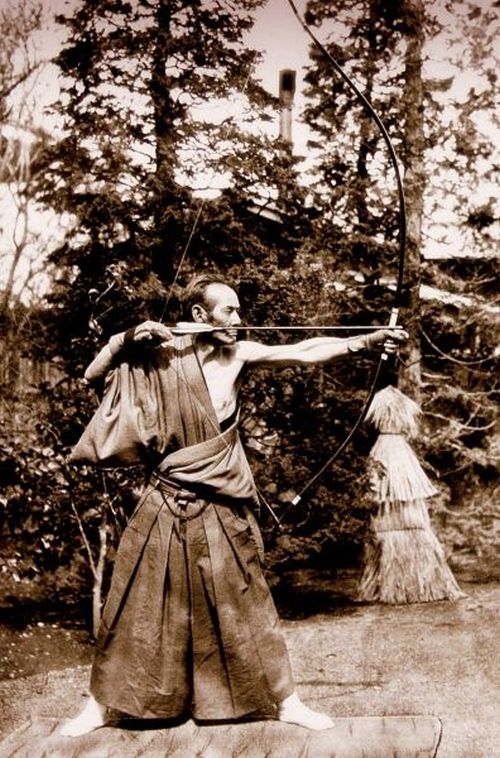|
|
History: Samurai Portrait
|
Wilson states that the shi, as the highest of the four classes, brandished the weapons as well as the books. bushi therefore translates as "a man who has the ability to keep the peace, either by literary or military means, but predominantly by the latter".
It was not until the early modern period, namely the Azuchi-Momoyama period and early Edo period of the late 16th and early 17th centuries that the word saburai was replaced with samurai. However, the meaning had changed long before that.
During the era of the rule of the samurai, the term yumitori (弓取, "bowman") was also used as an honorary title of an accomplished warrior even though swordsmanship had become more important. (Japanese archery (kyujutsu) is still strongly associated with the war god Hachiman.)
A samurai with no attachment to a clan or daimyo (大名) was called a ronin (浪人). In Japanese, the word ronin means "wave man", a person destined to wander aimlessly forever, like the waves in the sea. The word came to mean a samurai who was no longer in the service of a lord because his lord had died, because the samurai had been banished or simply because the samurai chose to become a ronin.
|
|









